Part I: Gdańsk
We left off last post with us calling it an early night at an Airbnb in Turku, Finland. The next morning we, as in my Mexican floormate Juan & I, woke up, made breakfast, and caught a bus to the airport (with a transfer at the city center). We ended up being a little early and spent about an hour and a half waiting until we could go through security and board our 12:40pm flight to Gdańsk, Poland. To this day I cannot believe that we were able to book the hour and a half flight for only 9.99€! We arrived at Gdańsk at 1pm thanks to the one hour time difference, and took a bus to the city center. It cost us only 1.6 zł (approximately 0.40€) for the 50 minute bus ride. I think this was the moment when we really took in how much more affordable Poland was going to be.
Gdańsk is a small port city located on the Baltic coast. I had no expectations of the city and was really pleasantly surprised by how quaint the Old Town was. After getting into the city we walked through the streets stopping at some of the major sites including Brama Wyżynna (the gate which was the main entrance to the city), Golden Gate, The Royal Way, Fontanna Neptuna (bronze statue of the sea god known as Długi Targ), Basilica of St. Mary of the Assumption of the Blessed Virgin Mary in Gdańsk (aka. St. Mary’s Church), Mariacka Street, and Żuraw. Oddział Narodowego Muzeum Morskiego (National Maritime Museum).
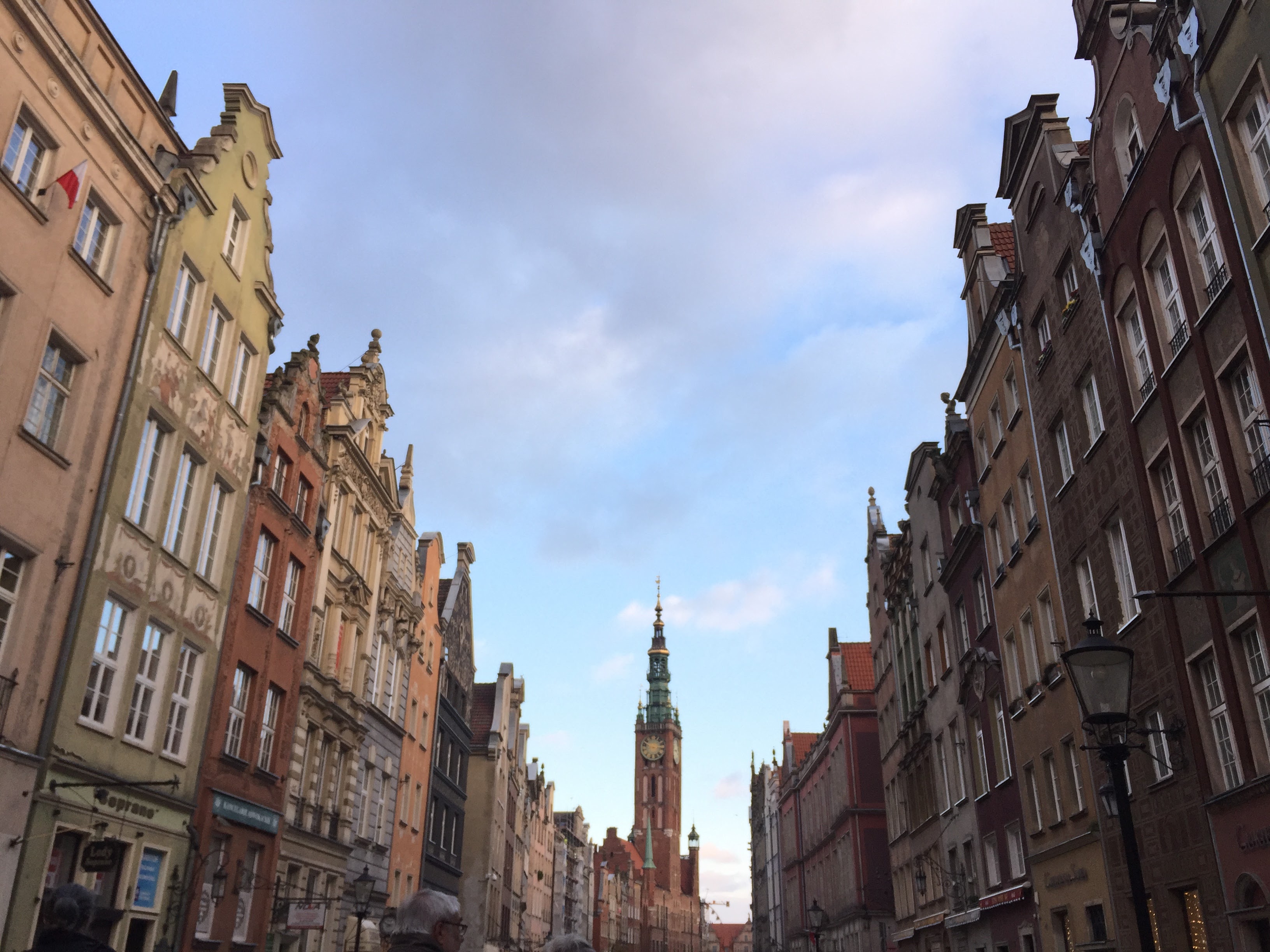

After we had covered all the sites, we decided to climb the 400 steps of St. Mary’s Church. Although the climb up the tower was questionable given the ongoing maintenance and construction taking place, it was definitely worth it for the view of the city we got at the top.
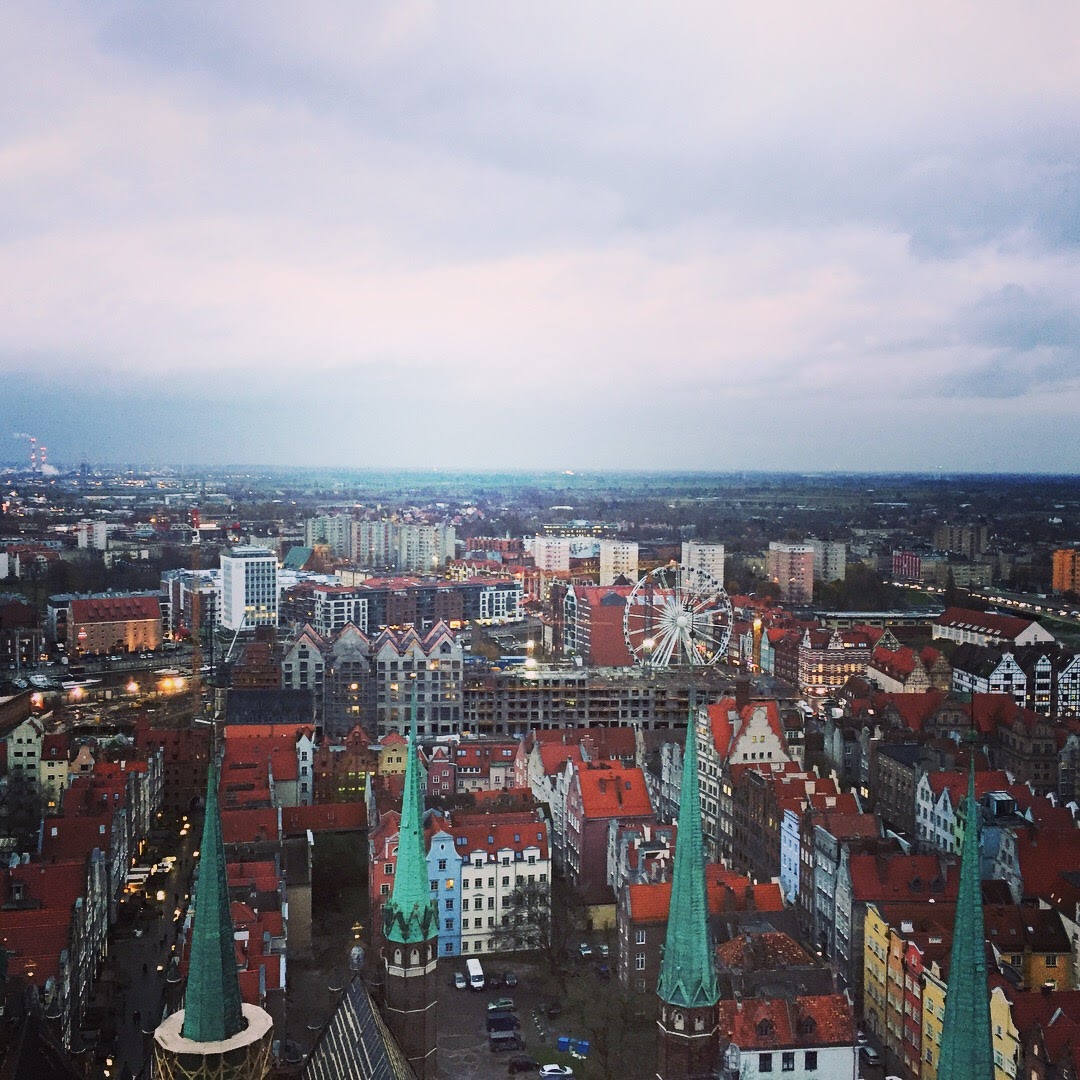
We got a late lunch at a nice Chinese restaurant (we were just really hungry and knew we had a week to try Polish food), then continued to wander around the city. Unfortunately the sun set really early and it was dark by about 5pm. In the evening we found a cute pub in one of the main squares and spent time talking and avoiding the cold over beer and coffee.
In the evening we walked back to the bus station, arriving an hour early to make sure we would find the exact spot to take the bus from. That night we got on an 11:40pm bus to the next city on our Poland trip: Warsaw.
Part II: Warsaw
Imagine this: It’s 4am, dark, and cold. We’ve arrived to Warsaw and are running on a couple hours of sleep.
Somehow we managed to make our way to the metro station, catch the subway, and find our way to our Hostel: Chillout Hostel. In the subway station we passed a couple pastry shops and grabbed a variety of pastries for breakfast. Little did I know that the these pastry stalls were going to be one of my favourite things about Poland. Anyways, we knew our checkin wasn’t until 2pm, but we were hoping we would be able to sit in the lounge area of the hostel and rest our eyes. Thankfully the hostel receptionist was incredibly nice and was okay with us fully sleeping on the couches in the common area and getting free coffee from the kitchen. So, being as exhausted as we were, we fell asleep until about 8am. After waking up, freshening up, and drinking a couple cups of coffee, we began planning out our two days in Warsaw.
We left the hostel and started walking towards the center of the old town where we would be taking a walking tour in the afternoon. Along the way we stopped by some sights including Muzeum Wojska Polskiego (Polish Army War Museum), Fryderyk Chopin Museum (totally didn’t realize that he was from Poland given the French last name), and Copernicus Science Museum.
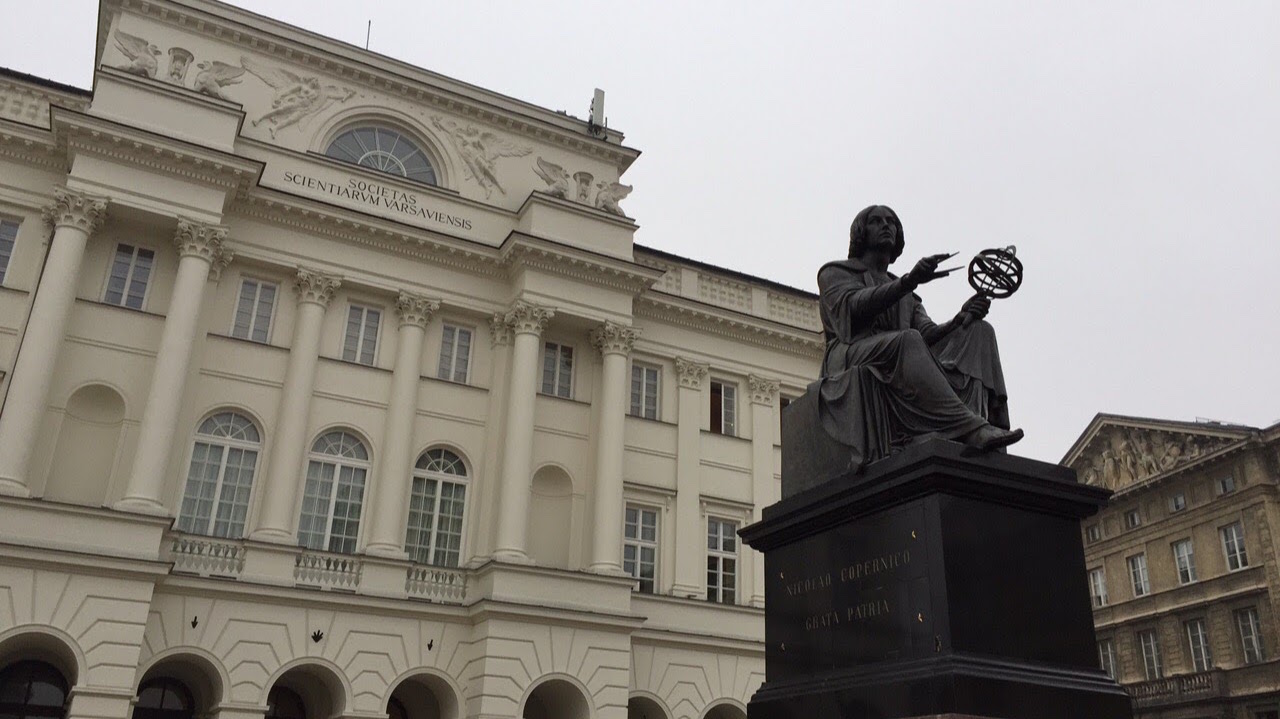
At 11am we began the Warsaw at War tour focused on the German-Soviet invasion of 1939 as well as the Warsaw Uprising of 1944, while shedding some light on everyday life in occupied Warsaw. On the tour we learned how Poland was initially offered a deal by Hitler regarding control of the port city of Gdańsk. After the offer was rejected, on September 1, 1939 Germany launched an attack on Westerplatte which would ultimately begin World War II. On the tour we saw Mały Powstaniec (a statue to commemorate the child soliders who fought in the Warsaw Uprising), the Tomb of the Unknown Soldier (a monument dedicated to unknown soldiers who fought for Poland), Cross Monument (a 9m high white granite cross), Warsaw Uprising Monument, St. Hyacinth’s Church, and the Warsaw Ghetto (largest Jewish ghetto in Nazi-occupied Europe during World War II).
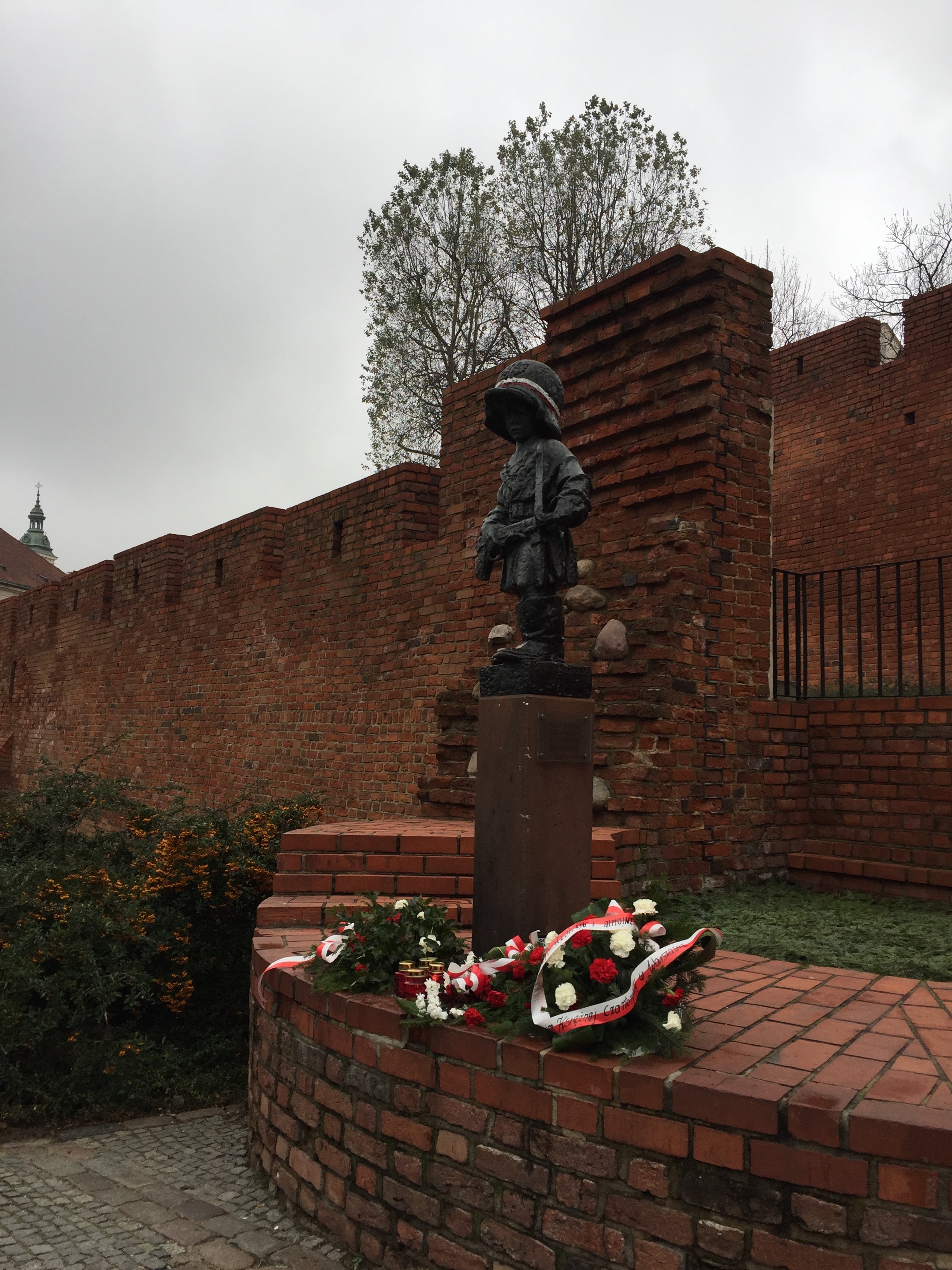
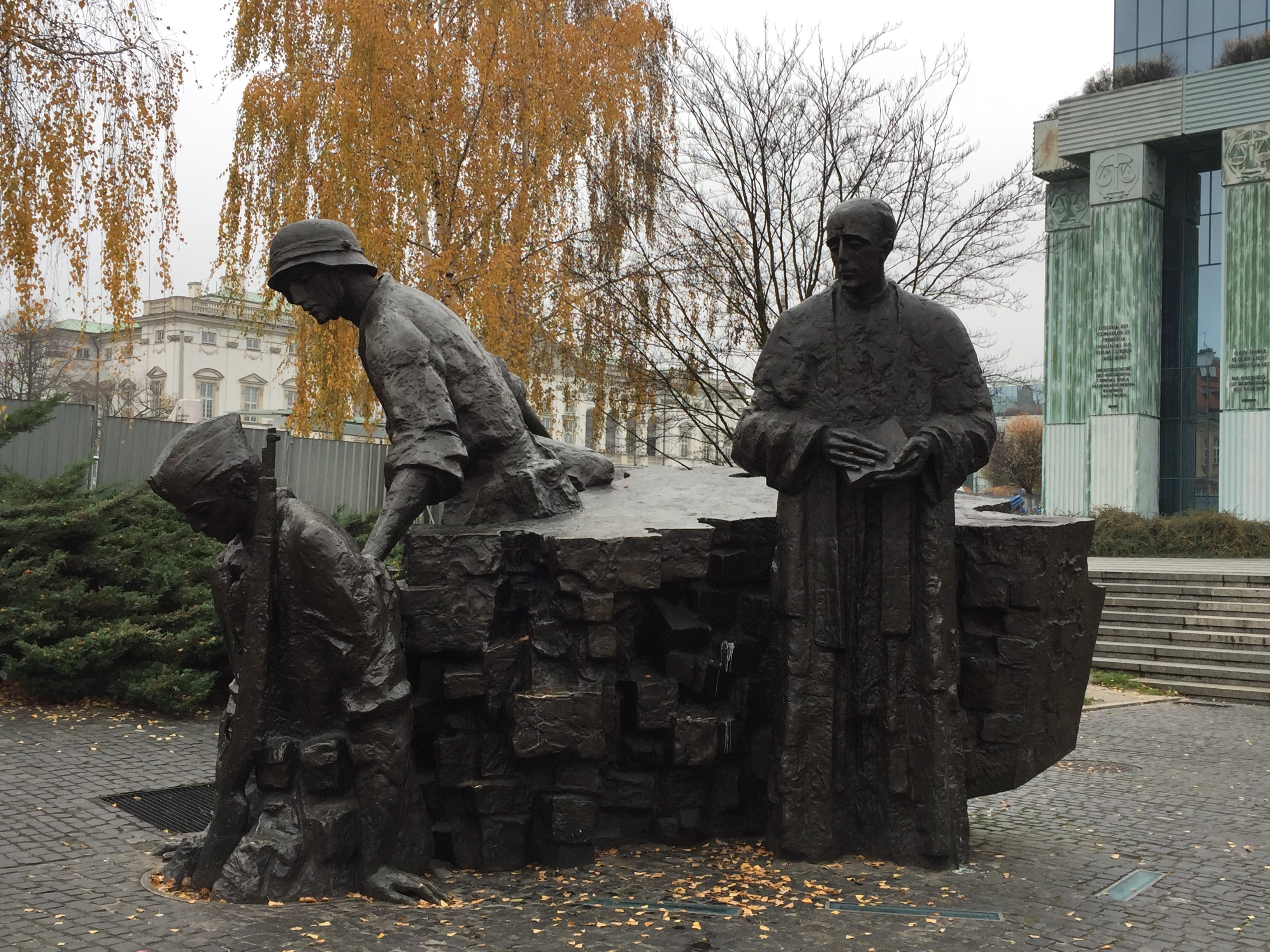
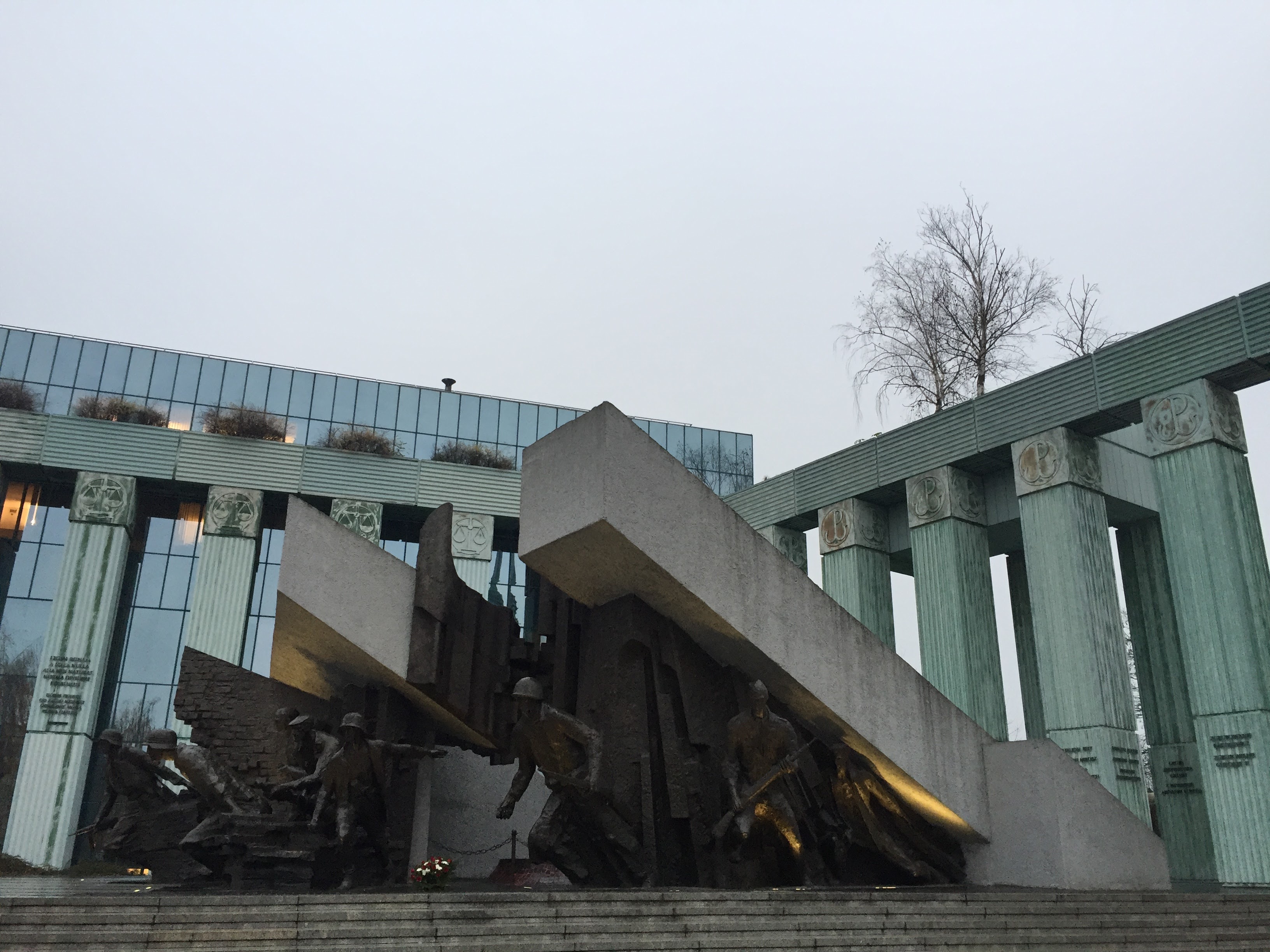
After the tour we went to the Museum of Polish Jews. The museum was beautifully constructed and had some really great interactive exhibits. The main exhibition was focused on the history of Polish Jews, from how and why Jewish people came to Poland long ago, how Poland became home to one of the largest Jewish communities in the world, how that changed during World War II, and what is being done to revive Jewish life.
After about an hour in the museum we were extremely exhausted and were itching to get home, check into the hostel, and take a nap. We caught the train back to our hostel to avoid the fourty minute walk, checked in, and passed out for about an hour. That night was pizza night at the hostel so we didn’t even need to step back out for dinner. Instead, we spent the night talking to other people staying in the hostel over pizza and wine!
The next morning we walked back to the old town and stopped at the shopping mall at Centrum station on the way. We spent an hour exploring the Royal Castle of Warsaw and grabbing lunch at - you guessed it - another pastry shop. At 2pm we got on another walking tour, this time called Historic Old Town. The tour started at Sigismund’s Column in the Old Town, which was built to commemorate King Sigismund III who moved the capital of Poland from Kraków to Warsaw in 1956. This, amongst a few other reasons, is what has resulted in the small feud that exists between locals of each city. In Warsaw we were told that Warsaw was better than Kraków despite what anyone in Kraków said. We would subsequently go on to be told the opposite in Kraków of course. Which city did I like more? Keep reading to find out!
During the tour we saw the Royal Castle, Main Market Square, the city walls and Barbican, Monument of Warsaw Uprising, Krakowskie Przedmieście street, Presidential Palace, and Warsaw’s University. Following the tour we tried some traditional Polish sausage and pierogis from a food stall in the Main Square. We spent the evening relaxing a bit in the hostel before leaving to get back to the bus station to catch our 11:45pm bus to Kraków.
Part III: Kraków
Imagine this: It’s 5am, dark, and cold. We’ve arrived to Kraków and are running on a couple hours of sleep. (see the trend here?)
Thankfully this time our hostel was close to the bus station so it only took us about 10 minutes to reach Greg and Tom Hostel. Again, we slept in the common area for a couple hours, then woke up and planned out our day on the city map. We left the hostel around 9am and went out to explore the city and catch a walking tour. This time we caught the “Jewish Quarter” tour, which explored the historical events that took place in the Jewish community during World War II. Highlights of the tour included Kazimierz Synagogues, Holocaust Memorial, Jewish Cemetery, Plac Nowy (New Market Square), Schindler’s List filming spots, Kazimierz Graffiti, Plac Wolnica, Kładka Bernatka (Bridge of Love), and Heroes of Ghetto Square. During the tour we passed a small market area with a bunch of zapiekanka vendors. Zapiekanka is a cross between an open-face sandwich, pizza, and garlic bread. It’s half of a baguette topped with sauce, cheese, and various kinds of meat and veggies. After the tour we actually walked back 20 minutes to the market just to try the zapiekanka there and it was definitely worth it.
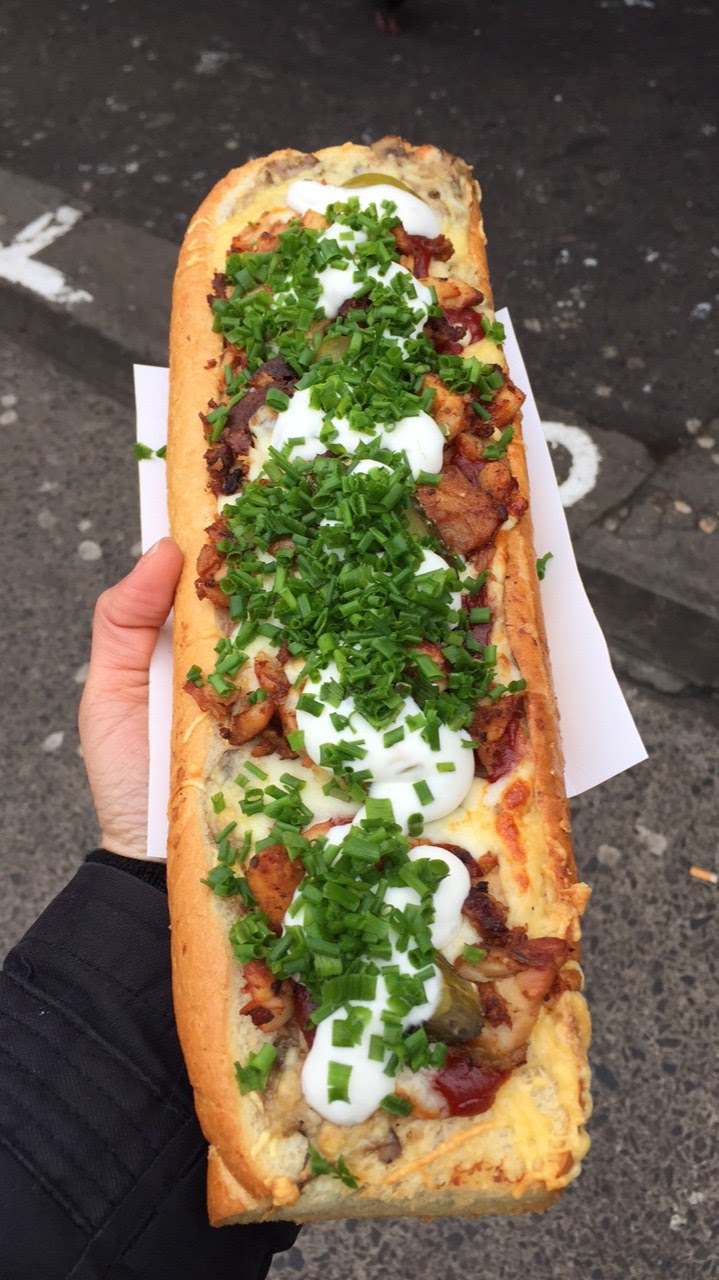
After lunch we walked back to the hostel to check in. It was at that point that we realized that I had actually booked another hostel (owned by the hostel we were at) that was about a 15 minute walk away. So I ended up moving my stuff there, checking in, and taking a nap. After about an hour I met up with Juan again and we wandered around the city some more and checked out some souvenir shops. In the evening, once we were sufficiently cold we walked back to the (first) hostel. There we ate dinner and spent time talking to some of the other travelers staying in the hostel. That night we took part in a pub crawl run by the hostel. We went from that hostel, to my hostel, to four or five clubs in the city.
Despite the late night I somehow managed to wake up to catch our 6:20am bus to Auschwitz-Birkenau. Unfortunately the same cannot be said for Juan and despite all my calls he didn’t wake up in time to join me. I ended up taking the bus with one of the people in the hostel we had met the previous night. It took about an hour and a half to reach Auschwitz.
Brief history lesson for readers who may not be too familiar with the scale and impact of Auschwitz: Auschwitz I was constructed by Nazi Germany to hold Polish prisoners who arrived at the camp starting in 1940. Auschwitz II-Birkenau was constructed in 1941 due to the excess of people in the first camp. Both were major sites of the Nazi Final Solution to the Jewish Question (the Nazi plan to exterminate Jews during World War II). It is estimated that 1.3 million victims arrived at Auschwitz between June 1940 and January 1945, and that about 1.1 million of them were killed including over 900,000 Jews. Sadly, most of the people were killed by gassing using the pesticide Zyklon B and others by starvation, disease, executions, and medical experiments. Auschwitz-Birkenau was liberated on January 27, 1945. Today, it is recognized as a UNESCO World Heritage Site and is visited by over a million people each year.
To be honest the whole experience was just chilling. Walking through the bunkers, reading the historical information, and seeing the living conditions first hand was deeply saddening but also just extremely eye-opening. It’s easy to hear the numbers in a history class and feel sad, but incredibly tough to really understand or even begin to understand what people in those camps went through. And while I’m not saying I definitely understand that now, I feel like I have at least a little more perspective. To me the most powerful thing I saw was this display of eyeglasses of prisoners of the camp. It was just a pile of what must have been thousands of glasses and it screamed so much about the magnitude of people that suffered in those camps. Everything that happened at Auschwitz was awful and it would be great if we could go back in time and rewrite history. But there is so much power in the amount of people that go and visit Auschwitz today. To see, to read, and to learn about what people went through so that we can improve as humans and not let anything like this happen again. I would highly recommend anyone visiting Kraków to make the trip to Auschwitz.
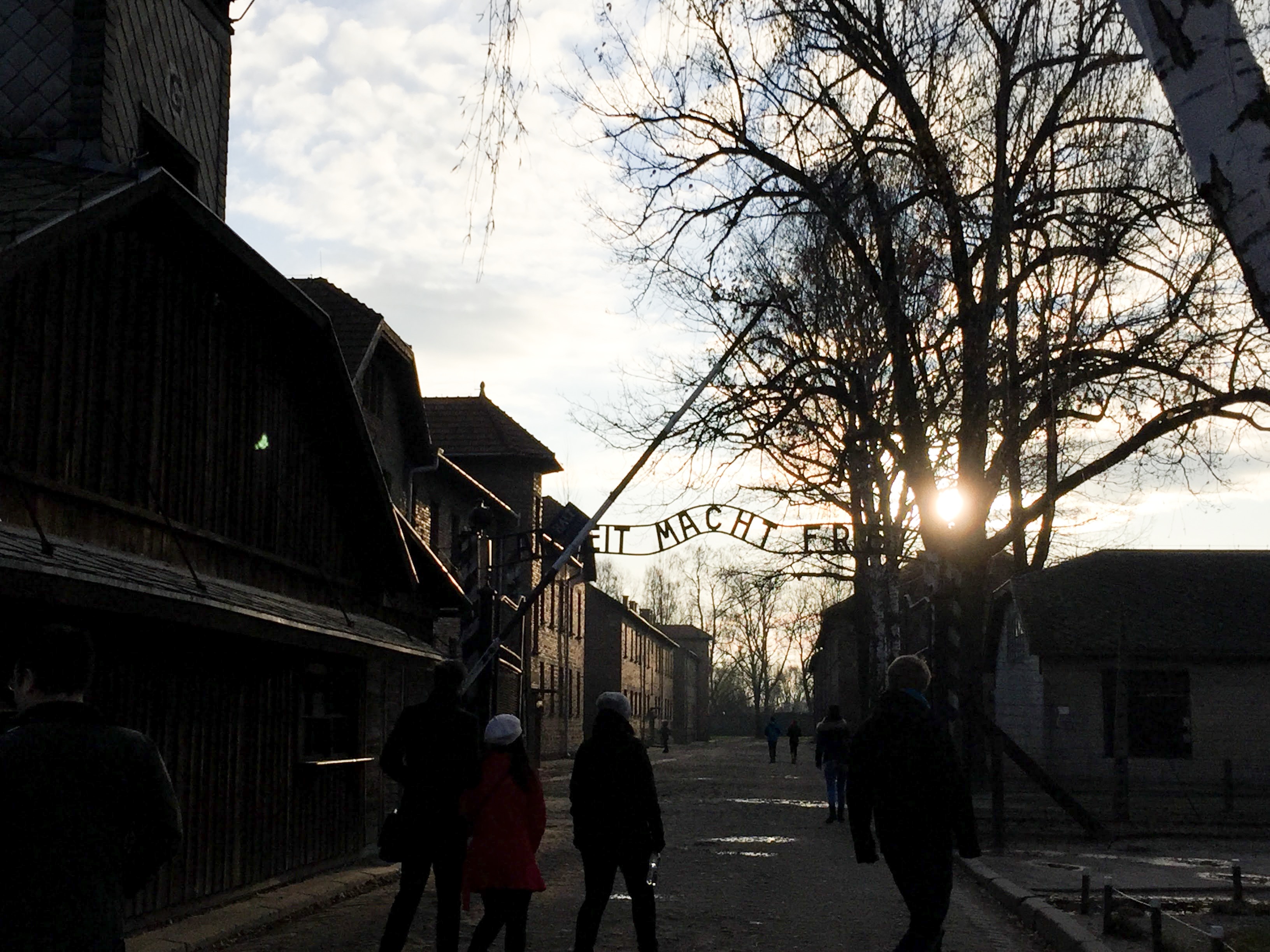
After spending about half the day there I caught the bus back to Kraków and met up with Juan again. We got lunch and took part in yet another walking tour, this time called Old Town Kraków. During the tour we saw the Main Market Square with St Mary’s church, Cloth Hall and Townhall Tower, remains of medieval city walls with Barbican and St Florian Gate, St Francis Church, Bishop’s Palace, Wawel Hill, Wawel Cathedral, and Wawel Castle. Finally in the evening we got back to our hostel and relaxed before heading out to catch our 11:25pm bus to Prague.
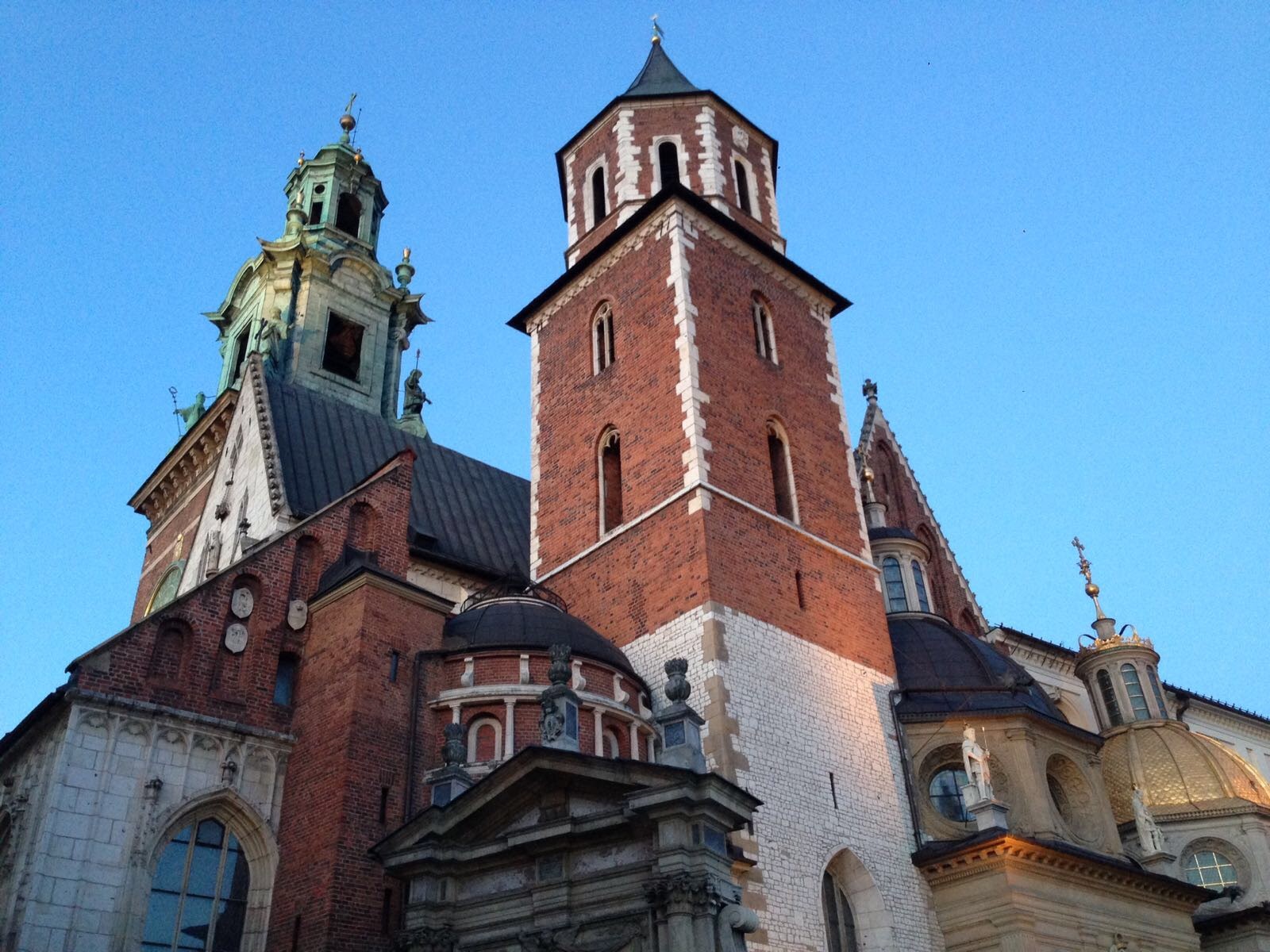
All in all, my experience in all three cities in Poland was incredible. Poland has a rich history, some incredible views, and delicious food. It definitely surpassed my expectations, and I look forward to going back someday.
As always thank you, or dziękuję ci (Polish for thank you) for reading!
-Pallavi